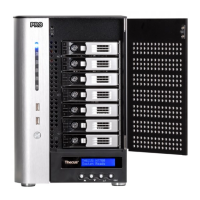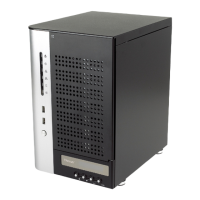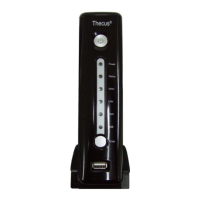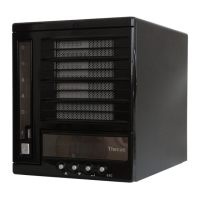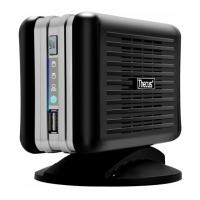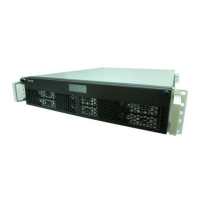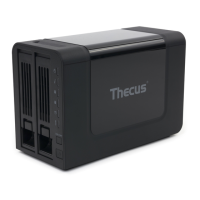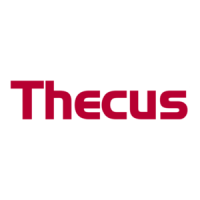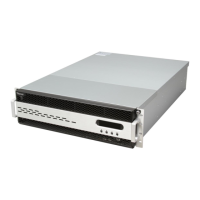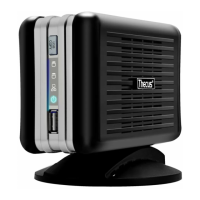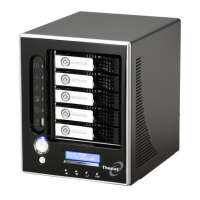Do you have a question about the Thecus N7700 and is the answer not in the manual?
| RAID levels | 0, 1, 5, 6, 10, JBOD |
|---|---|
| Storage drive size | 3.5 \ |
| Storage drive capacity | - GB |
| Storage drive interface | Serial ATA |
| Total installed storage capacity | 14 TB |
| Number of storage drives installed | 0 |
| Number of storage drives supported | 7 |
| Flash memory | 128 MB |
| Internal memory | 2 GB |
| Internal memory type | DDR2 |
| Processor frequency | 1.86 GHz |
| iSCSI support | Yes |
| Supported network protocols | SMB/CIFS, HTTP/HTTPS, FTP, NFS v3, AFP |
| Compliance industry standards | 802.3ad |
| USB 2.0 ports quantity | 4 |
| Ethernet LAN (RJ-45) ports | 2 |
| Dimensions (WxDxH) | 210 x 270 x 320 mm |
| Management platform | Linux |
| Compatible operating systems | Windows 7/2000/XP/2003/Vista UNIX/Linux Mac OS 9 / X |
| Power supply unit (PSU) capacity | 300 W |
| Operating temperature (T-T) | 5 - 40 °C |
| Operating relative humidity (H-H) | 0 - 80 % |
| Weight | 8600 g |
|---|
Introduction to the Thecus N7700 IP Storage Server, its features, and benefits.
Key features like File Server, FTP Server, and iTunes Server.
RAID, disk information, space allocation, and ISO mount.
WAN, LAN, and protocol configurations.
Managing user accounts and access rights.
Description of front panel components and LEDs.
Explanation of rear and back panel connectivity.
Precautions before installation.
Steps for installing hard drives.
Connecting network and power cables.
Verifying normal system operation indicators.
Configuring the N7700 using the setup wizard.
Using the device's LCD panel for status and setup.
Outline of the five main setup steps.
Accessing and navigating the web-based management interface.
Viewing system status, services, and logs.
Time, notifications, firmware, UPS, power settings.
RAID, disks, space allocation, iSCSI, folders.
Managing local and domain user accounts.
Printer and iTunes server functionalities.
Nsync and backup utility operations.
Logging into the system and accessing files via WebDisk.
Managing photo albums and uploading pictures.
Connecting computers to N7700 shared folders.
Accessing N7700 as an iSCSI drive.
Using USB/eSATA for storage.
Accessing N7700 remotely via internet.
Procedure for replacing failed HDDs.
IP address, network drive, time/date problems.
Resetting the N7700 to default settings.
Understanding the Dual DOM feature.
Expanding iSCSI volume capacity.
Securing data with RAID encryption.
Flexible iSCSI capacity management.
New designs for login and photo server UIs.
Enabling automatic updates and registration.
New Rsync settings and backup features.
Dual DOM for system configuration backup and repair.
Detailed hardware component list.
Detailed software features and protocols.
Explanation of RAID levels 0, 1, 5, 6, 10, JBOD.
Disk usage percentages per RAID level.
Advantages of Active Directory integration.
Information on software licenses and copyrights.
